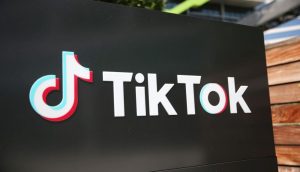In recent years, the podcast industry has evolved from an audio-only medium to a multimedia experience that blends audio and synchronized video. Platforms like Spotify and Apple Podcasts now enable creators to upload podcasts accompanied by video content, showing hosts discussing topics or conducting interviews. YouTube has also emerged as a prominent hub for podcasters, offering a video-driven experience that enhances audience engagement.
According to the podcast company Acast, the addition of visuals seems to be succeeding, with 74.4% of daily listeners in established markets (including Canada) having watched a video version of a podcast in the past year. Another recent Acast report, Podcast Pulse, also found that 84% of U.S. respondents took action after seeing an advertisement in a podcast video, while 72% considered brands promoted by podcasters, particularly on YouTube. According to the company, these U.S. trends are reflective of listener behaviour in Canada.
Paul Riismandel, president of Signal Hill, tells MiC the video feature offers brands the opportunity to get in front of more consumers on more platforms, with YouTube being the most prominent. And for podcasters, the tool increases their potential audience beyond the bounds of audio apps such as Apple Podcasts or Spotify.
However, Riismandel notes that podcasts are created to be consumed on the go and in contexts where video is not traditionally as accessible. So it’s important for advertisers to “keep in mind some of the things that have made podcast ads effective, including the intimate relationship between the hosts/creators and audience, the power of endorsements (when available), and consumers’ tendency… to act on what they hear.”
According to him, the challenge for both podcast networks and advertisers is that video platforms are not compatible with the ad technology that has been built around podcasting. Thus, video podcast ads are typically embedded in the episode, not dynamically inserted.
“This doesn’t necessarily require podcast ads on video to be different than audio podcast ads. As you can see on many shows today, hosts can continue voicing ads as usual – they’re just on camera doing it,” Riismandel says. “A couple of advantages to video are that the host can show products, or there can be on-screen title cards to reinforce web addresses, offer codes and the like – and these elements can be in the video description, too. But advertisers should be careful to make sure everything is covered well in the audio portion, so that they don’t miss those consumers who are primarily listening rather than watching.”
For Heather Gordon, managing director at Acast Canada, not only the growth of the video feature, but also the increasing interaction of video podcast consumers with social media, creates immense opportunities for advertisers. According to the Podcast Pulse report, half of listeners say they have commented or posted on a video podcast’s social media profile. In addition, nearly 75% of video podcasts listeners say they will consider their favourite host’s brand recommendations on social.
Gordon points out that brands interested in introducing video ads in podcasts should focus on telling stories that work in both video and audio formats. “The brands that succeed in omnichannel advertising that leads with podcasting will be the ones that understand the value of podcasters in the creator economy,” she says. “These brands are the ones that understand the importance of creating an ad for the platform and audience of the creator, rather than those that recycle the same content across all channels.”
Spotify, in particular, has been updating the platform’s video experience. A company spokesperson tells MiC that video consumption is growing rapidly on the app, so the company has focused on equipping creators with the tools and resources they need to connect with their audience and monetize their content.
Recently, the company announced that it will offer premium subscribers in Canada ad-free podcast viewing and a payment model for podcasters who upload video content to the platform starting in January. The app is also making it easier for audiences to stream their favourite video content in the foreground or background without interrupting the experience. For example, users can begin an episode while getting ready for the day, and watching in the foreground before slipping their phones into their pockets to continue listening in the background as they commute.
“Video can deepen that connection and add a new layer of richness and engagement. And because we know audiences today want the ability to choose between watching or listening to their favourite content, we’ll continue investing in more opportunities for them to experience both on Spotify,” the company said.
Spotify launched select video podcasts in 2020 and then expanded the feature in 2022 to allow all creators in Canada, the U.S., New Zealand, Australia and the U.K. to upload video content. According to its data, more than 250 million global users have watched a video podcast on Spotify, and nearly two-thirds of podcast listeners say they prefer podcasts with video. The number of creators actively posting videos monthly on the app has grown by more than 50% year-over-year and there are now more than 300,000 video podcasts on the app.























